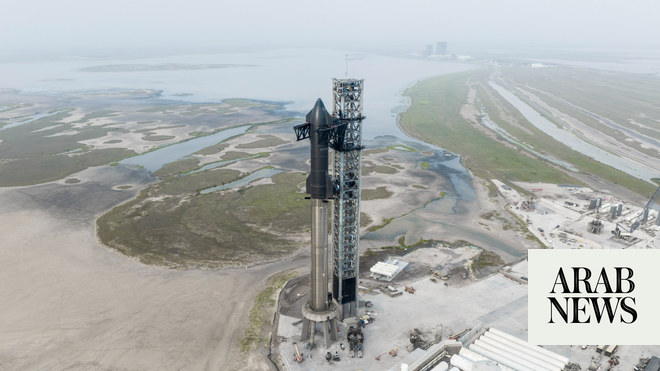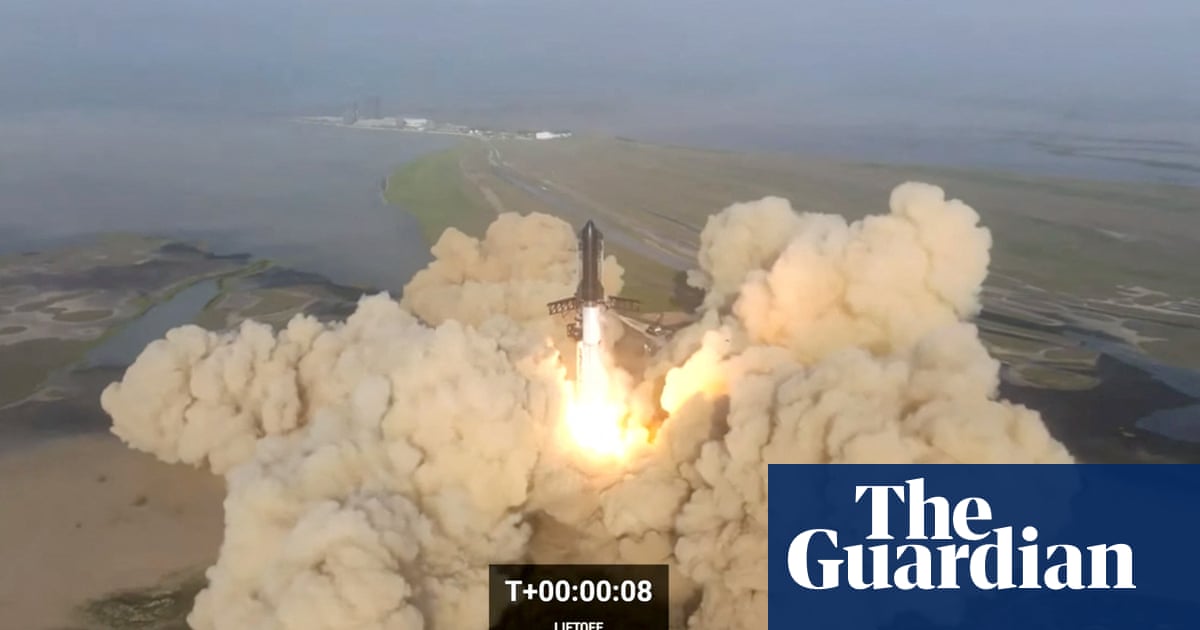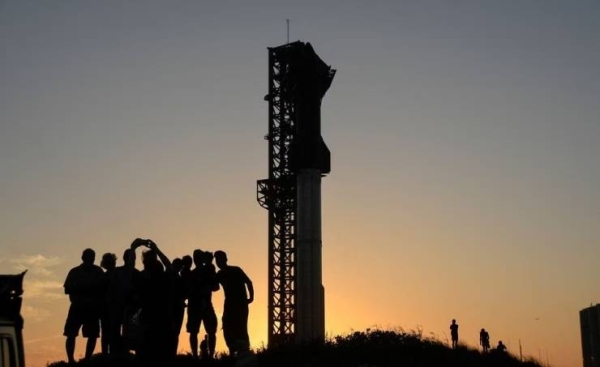
The largest and most powerful rocket ever built was readied and fuelled for its first test flight on Monday, but SpaceX cancelled the launch minutes before blasting off after discovering a “pressurisation” problem.
“A pressurant valve appears to be frozen, so unless it starts operating soon, no launch today,” the SpaceX founder, Elon Musk, said on Twitter. Minutes later, the launch was officially abandoned, with operators ending the countdown 40 seconds before lift-off.
SpaceX will need a minimum of two days to prepare the Starship rocket system for another attempt at orbital flight, which the company hopes will be the initial step on a human journey back to the moon and eventually Mars. The Federal Aviation Administration gave regulatory approval for the launch from Texas on Friday.
At 120 metres, the rocket is almost as long as three passenger jets and 10 metres taller than the Saturn V rocket that sent humans to the moon in 1969
The uncrewed orbital test will for the first time put the Starship cruise vessel, which will eventually carry astronauts, on top of the Super Heavy booster rocket, whose 33 Raptor engines will provide the immense thrust needed.
Both the upper and lower stages of the rocket system are designed to power themselves safely back to Earth for a soft landing so they can be reused, but the plan for the first flight is that both will fall into the sea. Musk says the reusability of rockets makes space flight significantly cheaper than what Nasa could offer.
Musk said on Sunday night that expectations should remain low for the Starship system, which is designed to have almost double the thrust of any rocket in history.
“Success is not what should be expected,” he said, adding that his team was looking to gather data about how the vehicle ascended to space and returned back to Earth. “Probably, tomorrow will not be successful,” Musk said. “It’s just a very fundamentally difficult thing.”
Unlike Nasa, which attempts to avoid risk, SpaceX has a record of showing a willingness to have test flights explode, with Musk saying the private venture benefits from understanding what goes wrong. Additional rockets are already being made for future test flights.
Prototypes of the Starship have made several subspace test flights above Earth in recent years, but the much larger Super Heavy booster has never left the ground.












